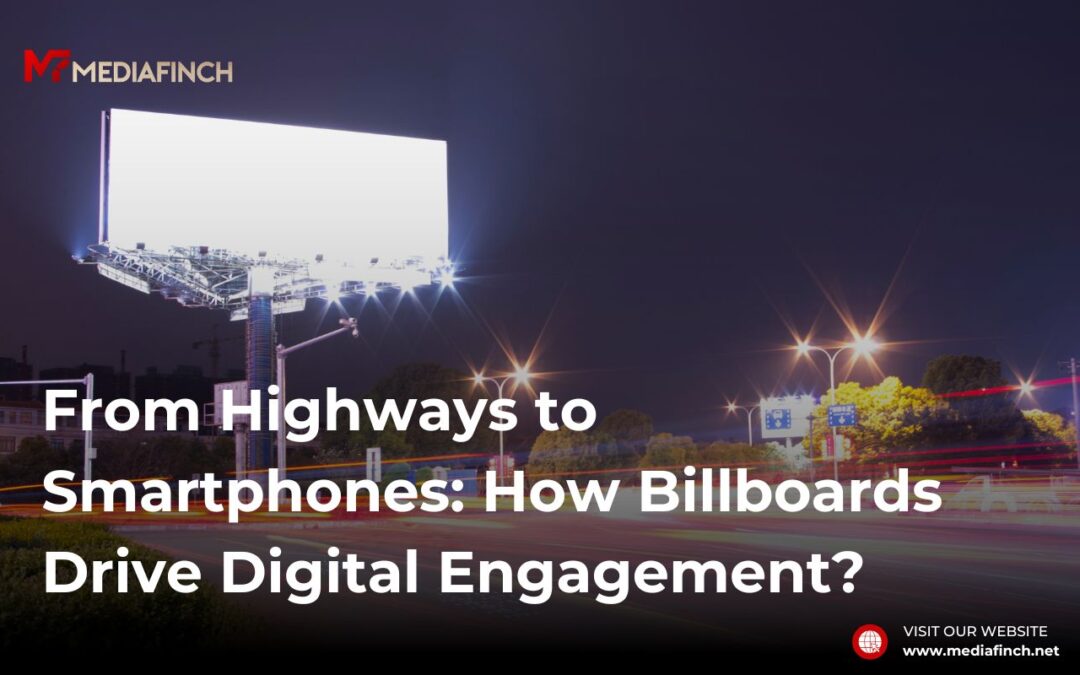Billboards have been part of our streets and highways for decades, but their role is changing. In today’s mobile-first world, billboard advertising in the digital age isn’t just about grabbing attention on the road—it’s about sparking curiosity and driving action on smartphones. Whether it’s searching for a brand, scanning a QR code, or joining a conversation online, billboards drive digital engagement in ways that connect offline impressions with online behavior.
Let’s explore how billboards are evolving, why they’re still relevant, and the best billboard engagement tactics to turn real-world visibility into measurable digital results.
The Evolution of Billboards in the Digital Age:
Billboards started as static posters on busy intersections, but today they’ve transformed into high-impact digital canvases. Global spending on out-of-home (OOH) advertising has rebounded strongly, with digital billboards accounting for over 30% of total OOH ad spend in 2024 (Statista).
Why do offline ads still matter in a mobile-first world? Because people may scroll past an online banner in seconds, but a giant screen along their daily commute demands attention. The modern billboard is a bridge between physical impressions and digital actions, nudging people from highways to their smartphones.
👉 Billboard advertising in the digital age has become less about static messages and more about sparking immediate, trackable engagement.
Also Read: static billboard vs digital billboard
The Psychology Behind Billboard Attention:
Billboards have only seconds to make an impression. That’s why bold visuals, sharp colors, and short text lines are so effective. Studies show that memory recall rates for OOH advertising are 47% higher than for digital display ads (Nielsen).
This is where digital billboards and consumer behavior intersect. People remember what they see outdoors, and this recall prompts online actions later—like Googling a brand or clicking a search ad.
In marketing terms, this is consumer behavior advertising at work: the psychology of seeing, remembering, and then acting digitally. That’s why brands that master billboard engagement tactics often see a measurable lift in their online presence.
From Street to Screen — How Billboards Trigger Online Searches?
Think about your own habits. You see a billboard for a new restaurant, and within hours, you’re typing the name into Google. That’s how the offline-to-online journey works.
Branded searches typically rise after billboard campaigns, proving that billboards and online engagement go hand-in-hand. A Nielsen study found that 46% of adults searched online for a brand after seeing an OOH ad, and 25% visited the advertiser’s website.
Real-world exposure → curiosity → smartphone search. That cycle shows how billboards drive digital engagement without ever needing a click.
Also Read: The Role of Digital Billboards in Canada’s Financial Sector
Integrating Billboards with Social Media Campaigns:
Today’s best campaigns don’t just stop at brand awareness—they encourage interaction. Hashtags, QR codes, and social handles on billboards create an instant connection between the street and social feeds.
Some of the most viral marketing campaigns of the past few years started with a billboard. For example, Spotify’s quirky “2019 Wrapped” billboards sparked millions of online mentions worldwide. That’s billboards and online engagement in action: a physical ad fueling digital conversation.
When done right, billboards and mobile advertising can become social magnets, driving likes, shares, and follows beyond the street.
Location-Based Billboards and Mobile Targeting:
Pairing billboards with mobile targeting takes things up a notch. Imagine driving past a billboard for a local gym, and then seeing its Google Ad or Instagram story within minutes. That’s no accident—it’s billboards and mobile advertising working together.
This “double exposure effect” reinforces brand recognition. Businesses can geofence areas around billboards, delivering mobile push notifications or ads to people who pass by. It’s a powerful one-two punch that ensures the message sticks.
This synergy is proof that digital billboards and consumer behavior are tightly connected. People act faster when they see a brand across both physical and mobile touchpoints.
Measuring Billboard-Driven Digital Engagement:
One of the biggest myths about billboards is that they’re hard to measure. But in reality, it’s easier than ever to track how offline ads spark online activity.
- Compare branded search trends before and after a campaign.
- Encourage action that’s traceable.
- Track engagement, conversions, and even sentiment shifts.
Marketers can clearly see when a billboard campaign has boosted traffic, clicks, or conversions. It’s all about linking offline impressions to digital KPIs.
Best Practices for Driving Engagement from Billboards to Smartphones:
To make billboards work harder for your brand, follow these proven tips:
- Drivers have seconds to process your message.
- Align billboard slogans with PPC or social ad wording.
- Add QR codes, hashtags, or “search now” prompts.
These billboard engagement tactics transform traditional ads into digital gateways. The more seamless the transition from street to smartphone, the stronger the results.
Final Thoughts — Why Billboards Are Still a Digital Powerhouse?
Billboards are no longer just background noise on highways. They’re powerful triggers for searches, clicks, and online conversations. By combining offline presence with digital tactics, businesses can influence billboards and online engagement in meaningful ways.
In short: awareness → curiosity → search → engagement. That’s the journey every marketer wants, and billboards deliver it.
If you want your brand to win in 2025 and beyond, don’t treat OOH as a stand-alone channel. Integrate it with SEO, PPC, and social—and let billboard advertising in the digital age take your digital results to the next level.
FAQs
Do billboards really drive online engagement?
Yes. Research shows that nearly half of adults search online after seeing a billboard, proving the direct link between offline exposure and digital action.
What’s the best way to connect billboards with smartphones?
Use QR codes, hashtags, and geofenced ads to create seamless offline-to-online experiences.
Can small businesses use billboards to grow digital engagement?
Absolutely. Local billboards combined with PPC and social campaigns help small businesses build visibility and trust.
How do I measure ROI from billboard-driven engagement?
Track unique promo codes, branded search volume, website visits, and conversion lift during your campaign.

